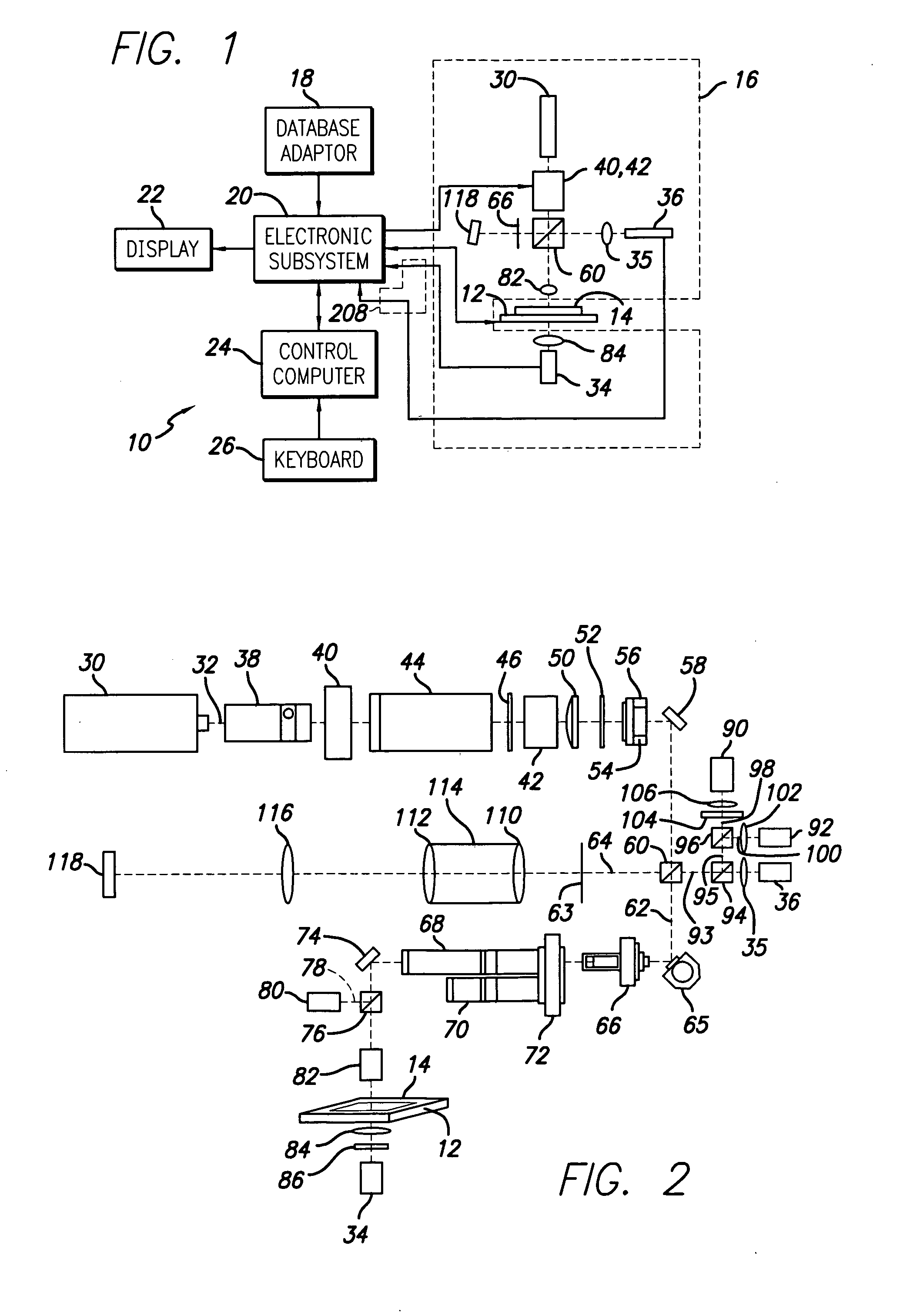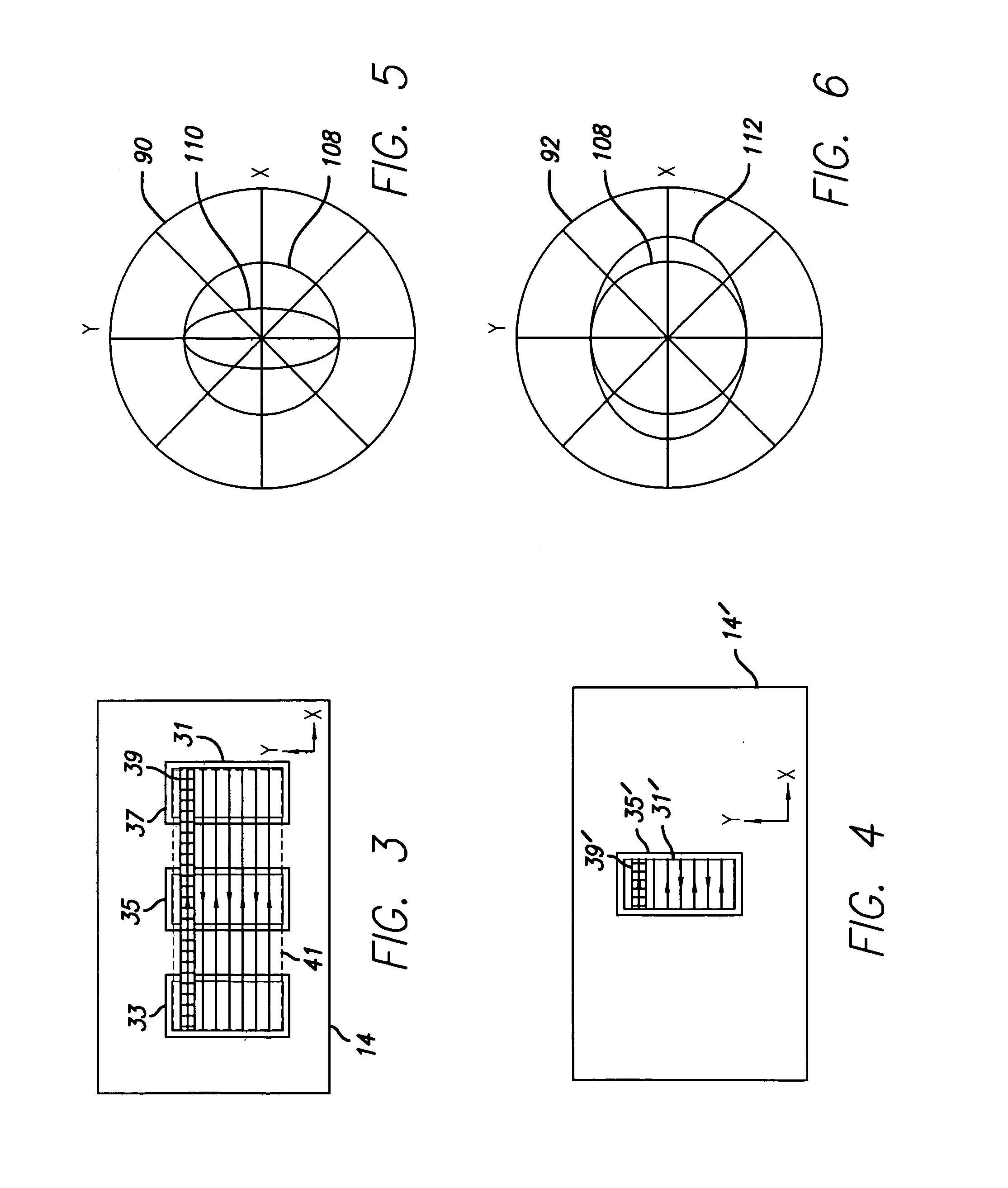Closed region defect detection system
a defect detection and closed-area technology, applied in the field of electronic inspection systems, can solve the problems of high cost of comparison-type inspection systems, increased complexity of integrated circuits, and high cost of inspection process
- Summary
- Abstract
- Description
- Claims
- Application Information
AI Technical Summary
Benefits of technology
Problems solved by technology
Method used
Image
Examples
Embodiment Construction
[0035]A general representation of a system employing the current design is presented in FIG. 10. From FIG. 10, a light source 1001 emits light energy or flux toward a set of lenses 1002, which expands the light energy toward a beamsplitter / reflector 1003. The light may be any form of radiation, including but not limited to laser light, sufficient to illuminate the wafer and be detected by the sensors 1007–1009. Light energy is reflected to lens or lensing arrangement 1004, and to the specimen, such as a wafer 1005, where in the case of a wafer the patterned side is downward in the orientation shown. The patterned side is in certain circumstances referred to as the chrome side or metal side, but other materials may be used. The opposite side of the wafer or specimen typically is composed of a transparent or semitransparent material, commonly referred to as glass. In this configuration, light exposure of the specimen will reflect from the patterned material and pass through areas wher...
PUM
 Login to View More
Login to View More Abstract
Description
Claims
Application Information
 Login to View More
Login to View More - R&D
- Intellectual Property
- Life Sciences
- Materials
- Tech Scout
- Unparalleled Data Quality
- Higher Quality Content
- 60% Fewer Hallucinations
Browse by: Latest US Patents, China's latest patents, Technical Efficacy Thesaurus, Application Domain, Technology Topic, Popular Technical Reports.
© 2025 PatSnap. All rights reserved.Legal|Privacy policy|Modern Slavery Act Transparency Statement|Sitemap|About US| Contact US: help@patsnap.com



